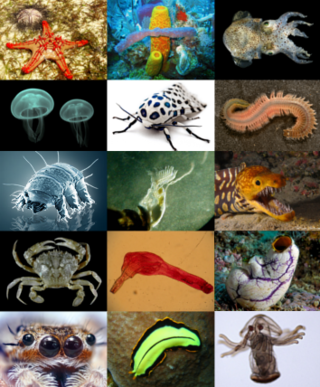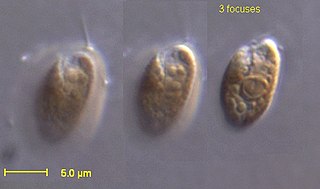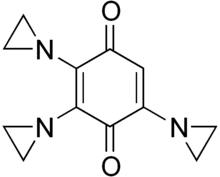
The cat, also referred to as domestic cat or house cat, is a small domesticated carnivorous mammal. It is the only domesticated species of the family Felidae. Advances in archaeology and genetics have shown that the domestication of the cat occurred in the Near East around 7500 BC. It is commonly kept as a pet and farm cat, but also ranges freely as a feral cat avoiding human contact. Valued by humans for companionship and its ability to kill vermin, the cat's retractable claws are adapted to killing small prey like mice and rats. It has a strong, flexible body, quick reflexes, and sharp teeth, and its night vision and sense of smell are well developed. It is a social species, but a solitary hunter and a crepuscular predator. Cat communication includes vocalizations—including meowing, purring, trilling, hissing, growling, and grunting–as well as body language. It can hear sounds too faint or too high in frequency for human ears, such as those made by small mammals. It secretes and perceives pheromones.

The International Standard Book Number (ISBN) is a numeric commercial book identifier that is intended to be unique. Publishers purchase or receive ISBNs from an affiliate of the International ISBN Agency.

Ketamine is a dissociative anesthetic used medically for induction and maintenance of anesthesia. It is also used as a treatment for depression and in pain management. Ketamine is an NMDA receptor antagonist which accounts for most of its psychoactive effects.

macOS, originally Mac OS X, previously shortened as OS X, is an operating system developed and marketed by Apple since 2001. It is the primary operating system for Apple's Mac computers. Within the market of desktop and laptop computers, it is the second most widely used desktop OS, after Microsoft Windows and ahead of all Linux distributions, including ChromeOS and SteamOS.

The Solar System is the gravitationally bound system of the Sun and the objects that orbit it. It formed about 4.6 billion years ago when a dense region of a molecular cloud collapsed, forming the Sun and a protoplanetary disc. The Sun is a typical star that maintains a balanced equilibrium by the fusion of hydrogen into helium at its core, releasing this energy from its outer photosphere. Astronomers classify it as a G-type main-sequence star.

Schizophrenia is a mental disorder characterized variously by hallucinations, delusions, disorganized thinking and behavior, and flat or inappropriate affect. Symptoms develop gradually and typically begin during young adulthood and are never resolved. There is no objective diagnostic test; diagnosis is based on observed behavior, a psychiatric history that includes the person's reported experiences, and reports of others familiar with the person. For a diagnosis of schizophrenia, the described symptoms need to have been present for at least six months or one month. Many people with schizophrenia have other mental disorders, especially mood disorders, anxiety disorders, and obsessive–compulsive disorder.

Pneumonia is an inflammatory condition of the lung primarily affecting the small air sacs known as alveoli. Symptoms typically include some combination of productive or dry cough, chest pain, fever, and difficulty breathing. The severity of the condition is variable.

Attention-deficit/hyperactivity disorder (ADHD) is a neurodevelopmental disorder characterized by executive dysfunction occasioning symptoms of inattention, hyperactivity, impulsivity and emotional dysregulation that are excessive and pervasive, impairing in multiple contexts, and developmentally-inappropriate.

Bird migration is a seasonal movement of birds between breeding and wintering grounds that occurs twice a year. It is typically from north to south or from south to north. Migration is inherently risky, due to predation and mortality.

Humans or modern humans are the most common and widespread species of primate, and the last surviving species of the genus Homo. They are great apes characterized by their hairlessness, bipedalism, and high intelligence. Humans have large brains, enabling more advanced cognitive skills that enable them to thrive and adapt in varied environments, develop highly complex tools, and form complex social structures and civilizations. Humans are highly social, with individual humans tending to belong to a multi-layered network of cooperating, distinct, or even competing social groups – from families and peer groups to corporations and political states. As such, social interactions between humans have established a wide variety of values, social norms, languages, and traditions, each of which bolsters human society. Humans are also highly curious, with the desire to understand and influence phenomena having motivated humanity's development of science, technology, philosophy, mythology, religion, and other frameworks of knowledge; humans also study themselves through such domains as anthropology, social science, history, psychology, and medicine. There are estimated to be more than eight billion living humans.
ATC code L01Antineoplastic agents is a therapeutic subgroup of the Anatomical Therapeutic Chemical Classification System, a system of alphanumeric codes developed by the World Health Organization (WHO) for the classification of drugs and other medical products. Subgroup L01 is part of the anatomical group L Antineoplastic and immunomodulating agents.
IARC group 3 substances, chemical mixtures and exposure circumstances are those that can not be classified in regard to their carcinogenicity to humans by the International Agency for Research on Cancer (IARC). This category is used most commonly for agents, mixtures and exposure circumstances for which the level of evidence of carcinogenicity is inadequate in humans and inadequate or limited in experimental animals. Exceptionally, agents (mixtures) for which the evidence of carcinogenicity is inadequate in humans, but sufficient in experimental animals may be placed in this category when there is strong evidence that the mechanism of carcinogenicity in experimental animals does not operate in humans. Agents, mixtures and exposure circumstances that do not fall into any other group are also placed in this category.

The dog is a domesticated descendant of the wolf. Also called the domestic dog, it was selectively bred from an extinct population of wolves during the Late Pleistocene by hunter-gatherers. The dog was the first species to be domesticated by humans, over 14,000 years ago and before the development of agriculture. Experts estimate that due to their long association with humans, dogs have gained the ability to thrive on a starch-rich diet that would be inadequate for other canids.

The human immunodeficiency virus (HIV) is a retrovirus that attacks the immune system. It is a preventable disease. There is no vaccine or cure for HIV. It can be managed with treatment and become a manageable chronic health condition. While there is no cure or vaccine, antiretroviral treatment can slow the course of the disease and enable people living with HIV to lead long and healthy lives. An HIV-positive person on treatment can expect to live a normal life, and die with the virus, not of it. Effective treatment for HIV-positive people involves a life-long regimen of medicine to suppress the virus, making the viral load undetectable. Without treatment it can lead to a spectrum of conditions including acquired immunodeficiency syndrome (AIDS).

Animals are multicellular, eukaryotic organisms in the biological kingdom Animalia. With few exceptions, animals consume organic material, breathe oxygen, have myocytes and are able to move, can reproduce sexually, and grow from a hollow sphere of cells, the blastula, during embryonic development. Animals form a clade, meaning that they arose from a single common ancestor.

The eukaryotes constitute the domain of Eukaryota or Eukarya, organisms whose cells have a membrane-bound nucleus. All animals, plants, fungi, and many unicellular organisms are eukaryotes. They constitute a major group of life forms alongside the two groups of prokaryotes: the Bacteria and the Archaea. Eukaryotes represent a small minority of the number of organisms, but given their generally much larger size, their collective global biomass is much larger than that of prokaryotes.
Autism or autism spectrum disorder (ASD), is a neurodevelopmental disorder characterized by repetitive, restricted, and inflexible patterns of behavior, interests, and activities, as well as persistent deficits in social communication and interaction. Autism generally affects a person's ability to understand and connect with others, as well as their adaptability to everyday situations, with its severity and support needs varying widely across the underlying spectrum. For example, some are nonverbal, while others have proficient spoken language.
A uniform resource locator (URL), colloquially known as an address on the Web, is a reference to a resource that specifies its location on a computer network and a mechanism for retrieving it. A URL is a specific type of Uniform Resource Identifier (URI), although many people use the two terms interchangeably. URLs occur most commonly to reference web pages (HTTP/HTTPS) but are also used for file transfer (FTP), email (mailto), database access (JDBC), and many other applications.

Coronavirus disease 2019 (COVID-19) is a contagious disease caused by the coronavirus SARS-CoV-2. The first known case was identified in Wuhan, China, in December 2019. Most scientists believe the SARS-CoV-2 virus entered into human populations through natural zoonosis, similar to the SARS-CoV-1 and MERS-CoV outbreaks, and consistent with other pandemics in human history. Social and environmental factors including climate change, natural ecosystem destruction and wildlife trade increased the likelihood of such zoonotic spillover. The disease quickly spread worldwide, resulting in the COVID-19 pandemic.















